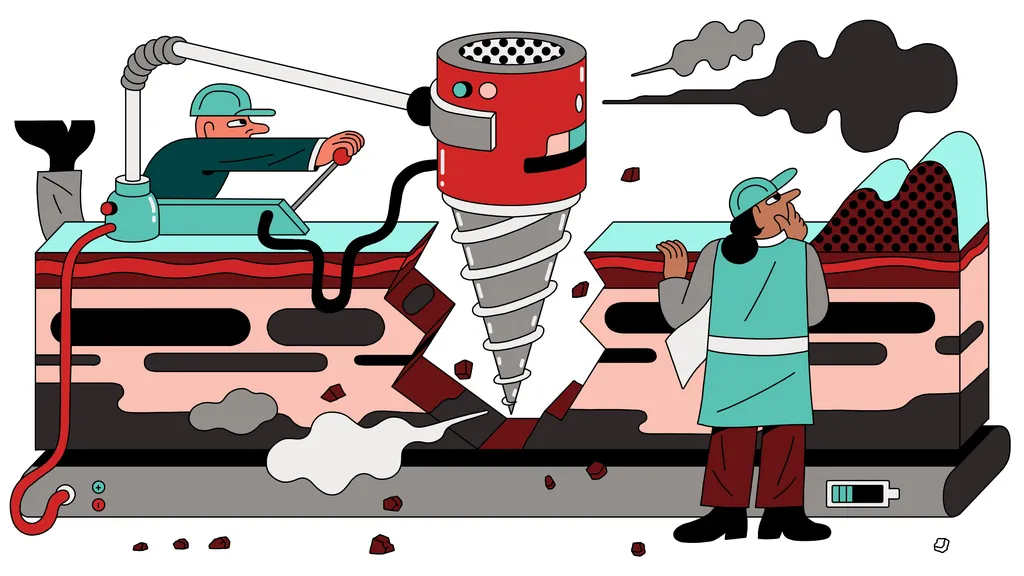In the heart of South China, where Hot Dry Rock (HDR) resources lie in abundance, a groundbreaking study is set to revolutionize the geothermal energy sector. Dr. Ye Li, a researcher at the School of Civil Engineering, Hunan University of Science and Technology, has delved into the dynamic splitting behavior and fracture surface morphology of granite subjected to high-temperature treatment, shedding light on the critical factors that influence thermal energy extraction efficiency in Enhanced Geothermal Systems (EGS).
The study, recently published in the *Journal of Materials Research and Technology* (translated as *Journal of Materials Research and Technology*), focuses on the behavior of granite, a common rock in geothermal reservoirs, under various thermal conditions and impact loading scenarios. The findings are poised to significantly impact the energy sector, particularly in optimizing HDR exploitation efficiency and assessing the stability of injection wellbore systems under high-temperature conditions.
Dr. Li’s research reveals that thermal clay minerals in granite undergo significant phase changes and structural transformations under high temperatures, while the main framework minerals remain stable. This discovery is crucial for understanding the dynamic mechanical properties of rocks after high-temperature cooling, a phenomenon that plays a pivotal role in the stability of rock masses in the open-hole section of injection wells.
One of the most striking findings is the clear loading rate strengthening effect observed in granite specimens at all temperatures. “The overall splitting strength decreases significantly with increasing temperature, with the highest strength observed at 25°C, and a nearly 80% decrease at 600°C,” Dr. Li explains. This insight is invaluable for engineers and researchers working on enhancing the efficiency of geothermal energy extraction.
As the temperature and loading rate increase, the crack morphology of the Brazilian disc specimens evolves from a regular linear extension to severe fragmentation. The fractal dimension of cracks increases significantly, indicating a more complex fracture pattern. The failure mode of the granite Brazilian disc transitions from a typical tensile failure to a tension-shear composite failure, dominated by oblique cracks.
These findings provide critical data support for optimizing HDR exploitation efficiency and assessing the stability of injection wellbore systems under high-temperature conditions. The research not only advances our understanding of the dynamic mechanical properties of granite but also offers practical implications for the energy sector.
Dr. Li’s work is a testament to the importance of fundamental research in driving technological advancements. As the world seeks sustainable energy solutions, this study paves the way for more efficient and stable geothermal energy extraction, ultimately contributing to a greener future.
The implications of this research extend beyond the immediate findings. By understanding the behavior of granite under high-temperature conditions, engineers can design more robust and efficient geothermal systems. This knowledge can also be applied to other areas of geothermal energy exploitation, potentially unlocking new resources and improving existing ones.
In the quest for sustainable energy, Dr. Li’s research stands as a beacon of innovation and progress. As the energy sector continues to evolve, the insights gained from this study will undoubtedly shape the future of geothermal energy extraction, making it a more viable and efficient source of power.

